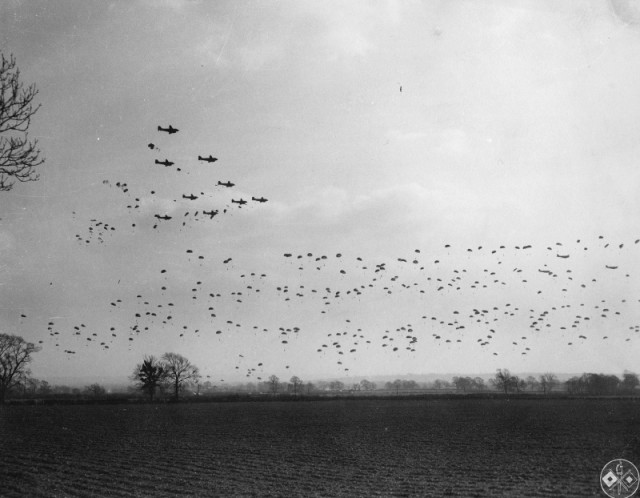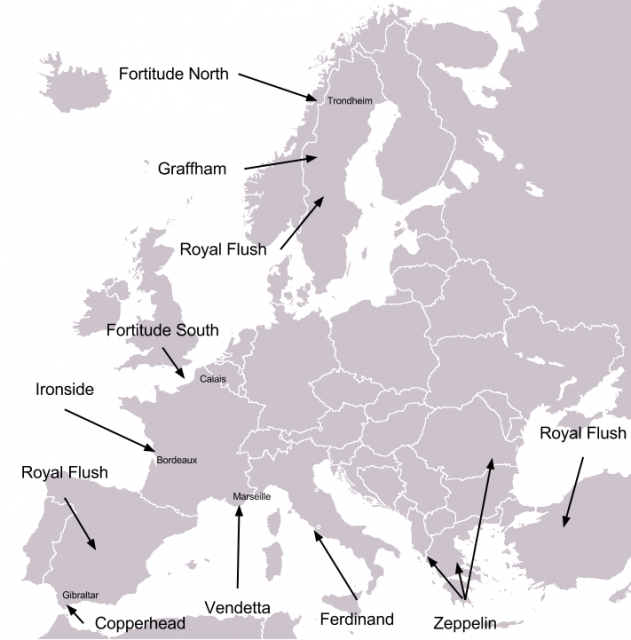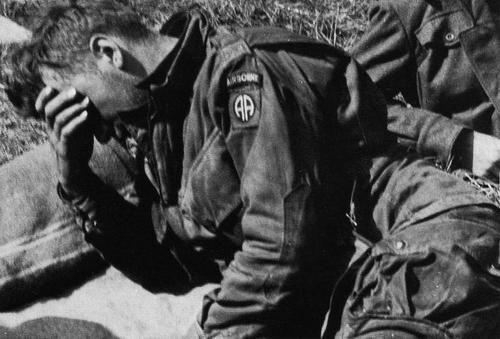When we talk about D-Day, most people picture the landing craft approaching the beaches, troops pouring off into the waves under a hail of German gunfire. While this was how most Allied troops did arrive in France, they were not the first to place their boots on European soil. Before them came the paratroopers.
Airborne forces in World War Two
The Second World War was the era of history’s greatest airborne landings. Planes and parachutes allowed troops to be dropped behind enemy lines. Helicopters were not yet available to do this more safely. During this brief period, the role of the paratrooper became crucial.
The Germans had embraced airborne assaults early in the war, climaxing in the costly but successful invasion of Crete. Now the Allies used the tactics Hitler had set aside as too costly, turning them against him as they went into France.
The great advantage of airborne landings was that they could seize and secure key points, often behind enemy lines. When used in coordination with ground advances, this ensured that important objectives couldn’t be destroyed by the enemy. It could also be used to clear the way for a ground advance.

But it came with a high risk. If they were unable to link up with other troops, then paratroopers could find themselves cut off, surrounded, and doomed.
The Approach
As the rest of the invasion force boarded boats to cross the Channel, 24,000 Allied airborne waited at airstrips. Their journey would be far faster than that of the waterborne invaders, but no less dangerous.
The airborne troops made their landings in two different ways.
Many traveled in transport planes, in conditions so noisy that they could barely make themselves heard. All of their equipment was strapped to their bodies, along with their parachutes. When they reached their target zones, the pilots signaled to these men using colored lights. They queued up at the door of their planes and leaped out, parachuting to the ground.

Others were towed across the Channel in gliders. As they approached their landing zones, the gliders were detached from the planes dragging them. The glider pilots then steered them to the ground, where the airborne soldiers disembarked. This method enabled the troops to take heavier equipment, but it came at a price. Casualties were high among the D-Day glider pilots, killed in the air or when crash-landing their vehicles in rough terrain.

As they approached France, the planes carrying the airborne forces inevitably hit enemy anti-aircraft fire. The German batteries weren’t very effective, but the pilots didn’t know this. They took evasive action, swerving through the skies, and many lost track of their objectives or dropped troops off wherever they could. The carefully calculated distribution of airborne troops began unraveling before most of them had hit the ground.
Operation Titanic
The first landings were those of ten members of the British Special Air Service (SAS), codenamed Operation Titanic. They landed just after midnight on the Cotentin peninsula, miles from the landing beaches and other drop sites. Also parachuting down with them were 500 crudely made, self-destructing dummies called Ruperts.

On landing, the SAS men started setting up fake landing lights, playing gramophone records of gunfire, and letting off fireworks. Together with the Ruperts, this was meant to create the illusion of a large paratrooper landing and so distract German troops from the real sites.
It worked. The German 915th Infantry Regiment was sent to deal with the fake invaders. This made the landings at Omaha beach, where the 915th served as reserves, far easier. Many lives were saved, but the SAS men themselves took high casualties – eight out of ten were lost.
The British Landings
East of Caen, the 8,000 men of Britain’s 6th Airborne Division made their landing. Their objective was to seize the bridges over the River Orne, and so block the route of German Panzers to the coast.
Despite landing too far east, the first wave had a successful start, catching the Germans by surprise. They secured a new landing zone, where they were joined by glider-borne troops with anti-tank weaponry. From there, they advanced to take all the bridges except one at Troarn.

The German 716th Division counter-attacked, but the 6th Airborne drove them off. However, the bridge at Troarn remained a strategic issue, as it carried a major road.
Rather than leave the bridge in German hands, Major Rosveare of the 6th Airborne led a daring raid. He and a small team raced to the bridge in a jeep, carrying explosives with them. They blew up the bridge, cutting off the last German route onto that part of the Allied flank.
150 more airborne British soldiers landed near Merville, overlooking Sword beach. They launched a fierce assault on the German battery there, which would threaten the seaborne landings. Half the unit was killed in brutal hand-to-hand fighting, but they took and destroyed the guns.
The American Landings
The Americans sent 16,000 airborne soldiers in two divisions – the 82nd and 101st Airborne. Landing at the base of the Cotentin peninsula, they were to secure lines of transport and prevent a German counter-attack from Cherbourg.
Anti-aircraft fire and cloud cover caused a rough landing for both divisions, especially the 101st. Men were scattered across the countryside. Some drowned, dragged down into swampy ground by their heavy gear. Valuable equipment was lost as gliders made crash landings, often in the wrong place. Only one in six men from the 101st reached their intended rendezvous points.

The scattered paratroopers struggled to reach their targets. Troops from the 82nd captured the town of St Mére Eglise on the road to Cherbourg, but other targets, including the bridges over the River Merderet, were not taken.
Isolated men joined up with whatever units they could find or banded together in improvised formations. Determined to do what they could, they ambushed German troops wherever they found them, keeping them from reaching the coast. Those they killed included Lieutenant-General Falley, the commander of the German 91st Division.
Success Amid Chaos
Though chaotic, the airborne landings were a success. They caused chaos and confusion behind German lines, impeded the enemy’s ability to counter the beach landings, and seized control of vital objectives. Taking out General Falley and the guns at Merville proved to be particularly important, but every action the airborne troopers took helped to ensure the success of the troops approaching the coast.
D-Day had arrived, and the airborne had led the way into France.
